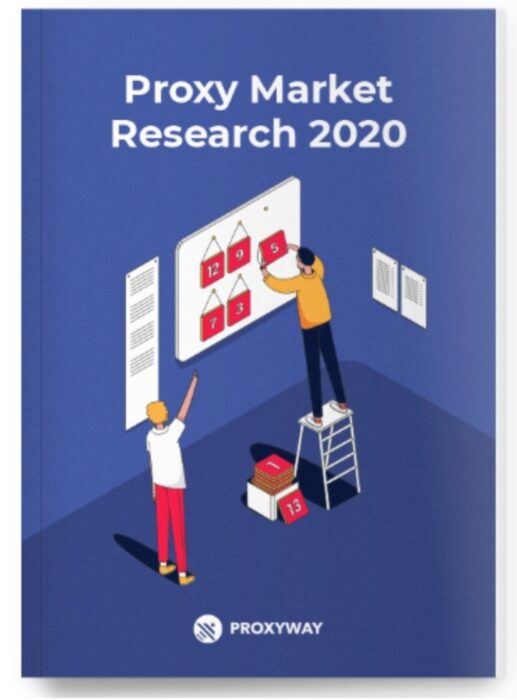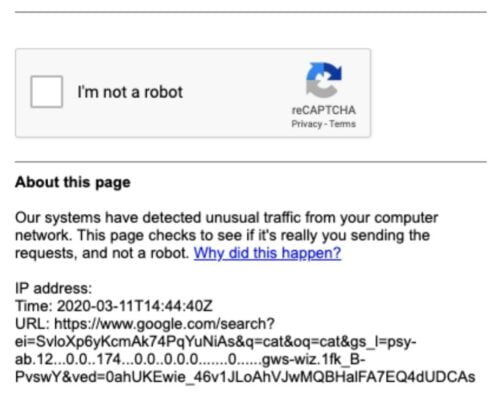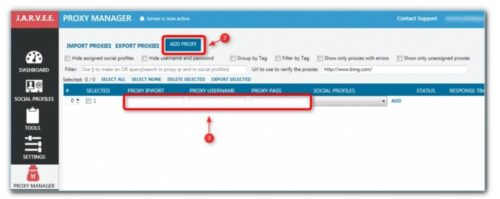A Proxy is an IP address that stands between your device’s IP and the internet. Instead of connecting to the web directly, it routes all your traffic through a proxy server. People use proxies for a wide range of tasks: from browsing anonymously to accessing geo-restricted content to scraping large amounts of data from public sources.
Best Proxies for Scraping or Automation software
Many providers offer paid proxy services, and you can even find free proxy lists online. In this article, we will help you choose the best proxies for your scraping or automation software.
Why you might need proxies
Without proxies, your scraping will soon run into limits. Webmasters want to save resources, and if you make too many requests from the same IP, they will quickly block you. Even Google with its endless resources will soon start showing reCAPTCHAs after every other connection request.
The same goes for automation tools. For instance, you might want to increase the social media presence of your business. If you create multiple accounts from the same IP address, they will get taken down in no time. Proxies can help you overcome this problem.
Why you should avoid free proxies
Free proxies might sound tempting, but you should only use them for the most basic tasks or to test your software. Even then, be very careful about free proxies. If your activity involves personal data, social media, or any larger scraping projects, steer clear from them altogether.
Why? First, proxies you can find online for free are often overused. Sharing them with many other people will make such proxies slow and unstable. There is also a high chance they will already be blocked by your target websites.
Moreover, and this is very important, you cannot be sure who is controlling the proxy server. If that person has bad intentions, they can leak your personal data or modify the websites you visit, for example, by serving you malicious ads.
So, with this point made, how do you go about getting proxies?
Choosing the right proxy type
When you start researching proxies, one of the first questions that arise is, “what kind of proxies should I choose?” There are two main types out there: residential proxies and datacenter proxies. Here’s how they compare.
1] Datacenter proxies
Datacenter proxies are IP addresses that originate from servers in data centers. They are fast and relatively cheap. The downside is that such IPs are very transparent about being proxies. Websites that do not want to be scraped can easily block them. Another drawback is that providers rent servers in limited locations, so datacenter proxies are not always ideal for tasks that need diverse geographic coverage.
2] Residential proxies
Residential proxies are borrowed from devices of real users. Because of this, they are more expensive and slower than datacenter IPs. But these drawbacks are largely outweighed by the fact that such proxies are very hard to detect. Also, they often use back connect servers, meaning that you get one gateway IP address, and the provider rotates the proxies for you. This, along with their extensive location coverage, makes residential proxies suitable for more demanding tasks.
Which type do you need? The general consensus is that datacenter proxies suffice for simple scraping projects where the target is not actively trying to block you. They can also work for creating social media accounts but not managing them. If you can, we always recommend going with residential proxies – they are less complicated and well worth the money.
Choosing a proxy provider
Now that you know what kind of proxies you need, where do you get them? There are plenty of providers out there, and they all seem to offer very similar services. You can go by price, but that might not always be the best option.
Luckily, there are resources to help you decide. Proxyway recently released a proxy market research report. It compares the nine largest proxy providers by a variety of metrics, including proxy performance, anonymity, features, and price.

[Image source – ProxyWay]
Unlike many other reviews written by proxy enthusiasts, the report was made in collaboration with 191 experts from 6 industries, such as data scraping, SEO, and market research. The results come from two months of testing, in the form of an easy-to-compare score.
The market research singles out Oxylabs, Smartproxy, and Luminati as the leading residential proxy services. It also mentions Packetstream as an emerging affordable choice.
Setting up a proxy
After you have received your proxies, it is time to set them up with your preferred web scraping tool. The setup process largely depends on which software you have decided to use.
In most cases, it will be as simple as entering your proxy server’s address in the form of IP:Port. If the software requires user:password authentication, you will have to enter that as well. Then, you are ready to go.
For example, this is the proxy setup screen in Jarvee, a popular social media automation tool:
[Image source – Jarvee]
The real art lies in using your scraping or automation software correctly to avoid getting yourself blocked.
We recommend starting slow and following the best practices provided by more experienced users or the tool’s developers. Good luck!


Leave a Reply